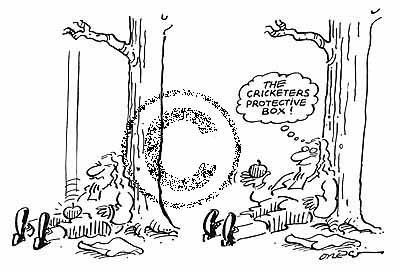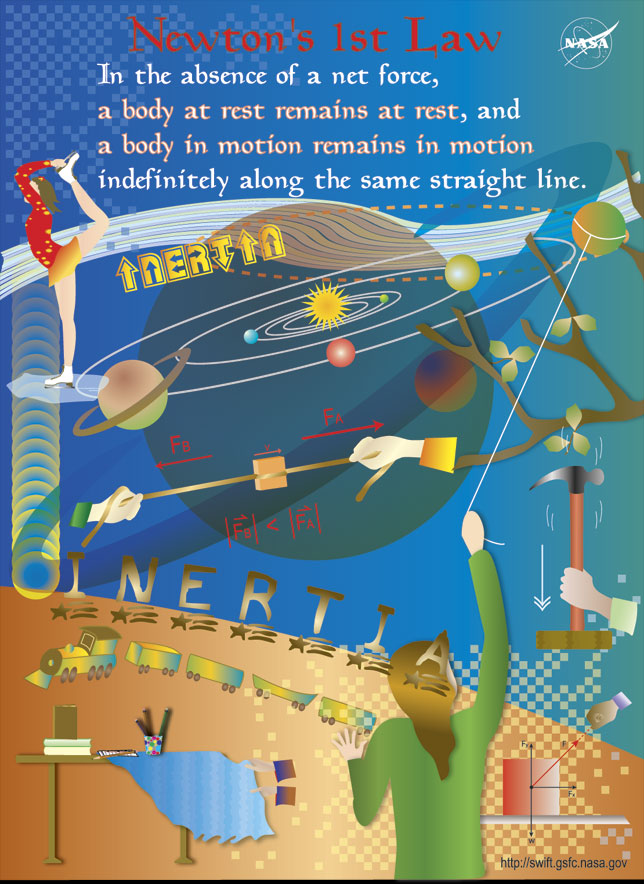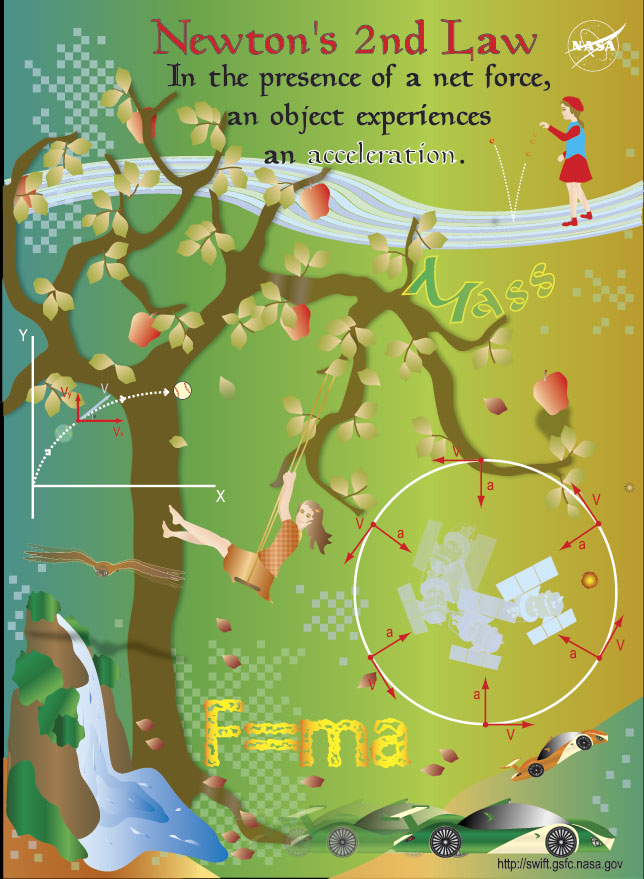Laws
of Motion

http://www.cartoonstock.com/lowres/pdr0020l.jpg
Sir
Isaac Newton physics is based on
the fundamental concepts of mass and force.
In his book “Principia,” written in 1685, Newton investigates
the
properties of different types of forces.
According to The Cambridge Companion to Newton (Pg 57),
the most
important of these forces are those which produce accelerations or
changes when
a body is in motion or at rest. In his
book “Principia” Newton separates these forces into three main
categories: impact or percussion,
pressure, and
centripetal force. Newton also mentions
a force of inertia which according to The Cambridge Companion to
Newton
(Pg 57) it is not a force at all
according to the perspective of dynamics.
In “Principia” Newton refers to mass as “quantity of matter,”
this is
determined by density and volume. He
also refers to force as an “action” that alters the “state” of a body. To keep this short, most of Newton’s work in
Physics contains his three Laws of Motion:
1)
Newton’s
First Law (The Law of Inertia)
“Every body
preserves in its state of being at rest or of moving uniformly straight
forward
except insofar as it is compelled to change its state by forces
impressed.”
(Cohen & Smith Pg 64)
In American English this means that a body remains
in constant motion or at rest unless an external force is applied. That is the reason why the first law is
usually referred to as “The Law of Inertia”.

http://swift.sonoma.edu/education/newton/newton_1/first_law.jpg
2)
Newton’s
Second Law (F=ma)
“Change in motion is
proportional to the motive force impressed and is directed along a
straight
line in which this force is impressed” (Cohen & Smith Pg 65). To keep this simple, F=ma,
which in terms refers to the force being proportional to the
mass and acceleration of a system.
http://swift.sonoma.edu/education/newton/newton_2/second_law.jpg
3)
Newton’s
Third Law (Forces always occur in pairs)
“To
any action there is
always an opposite and equal reaction” (Cohen & Smith Pg 68). This law, as Newton mentioned, applies
specifically to collisions and means that for every action force there
is an
equal reaction force in the opposite direction.

http://swift.sonoma.edu/education/newton/newton_3/third_law.jpg



